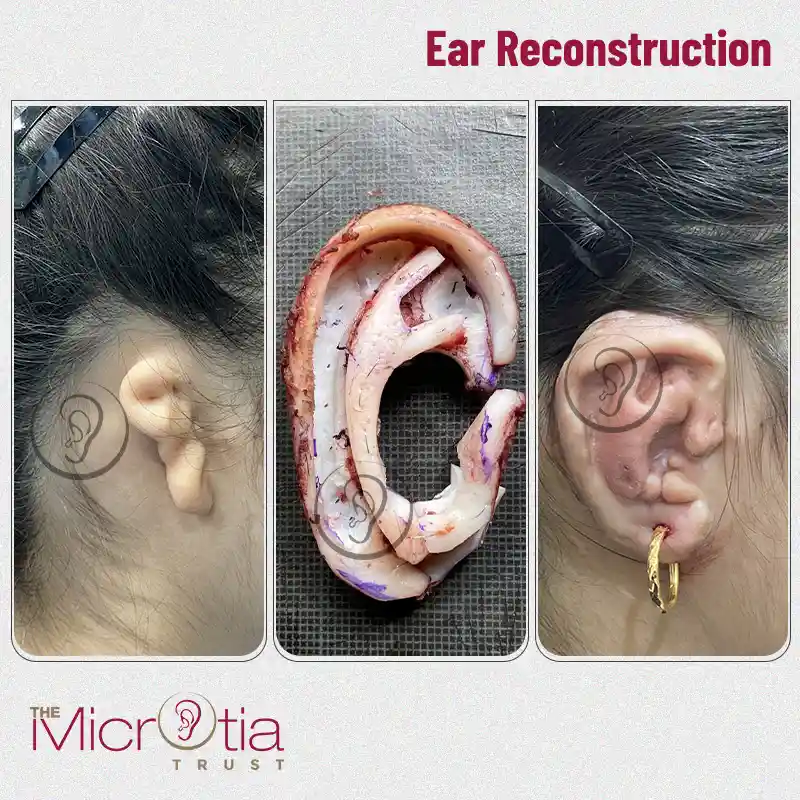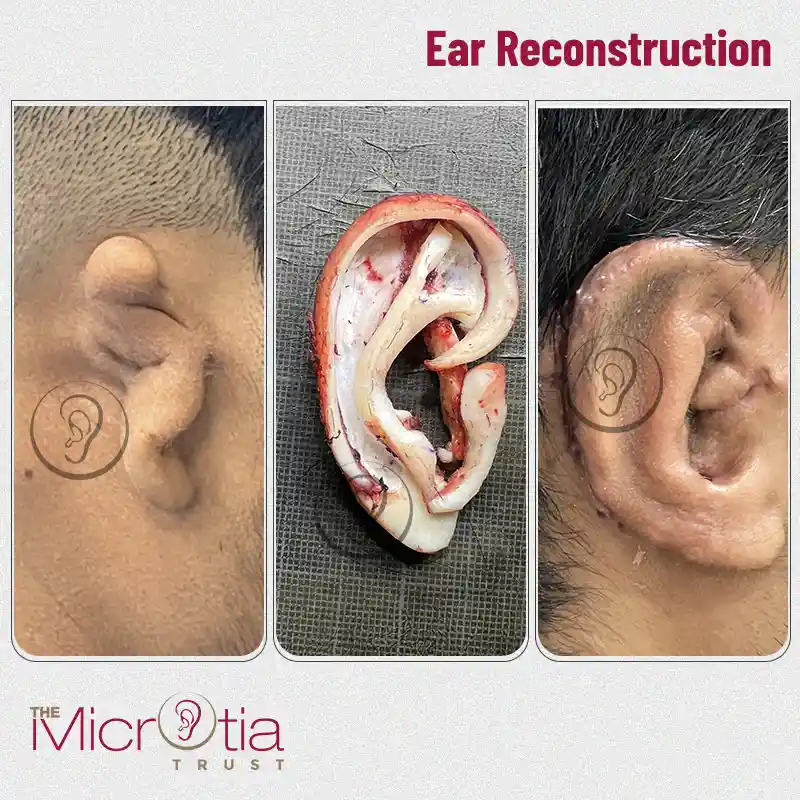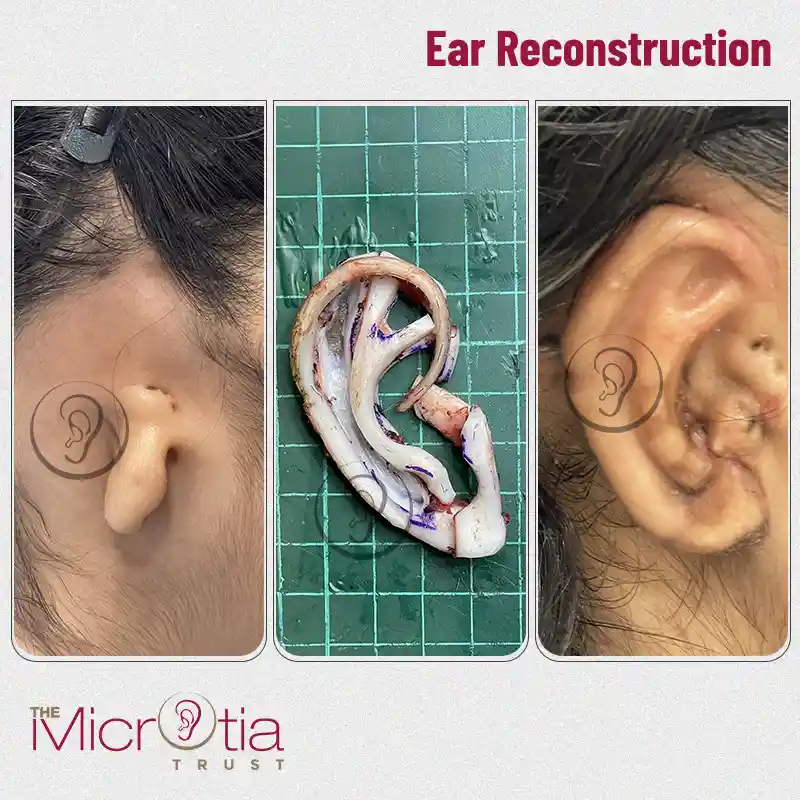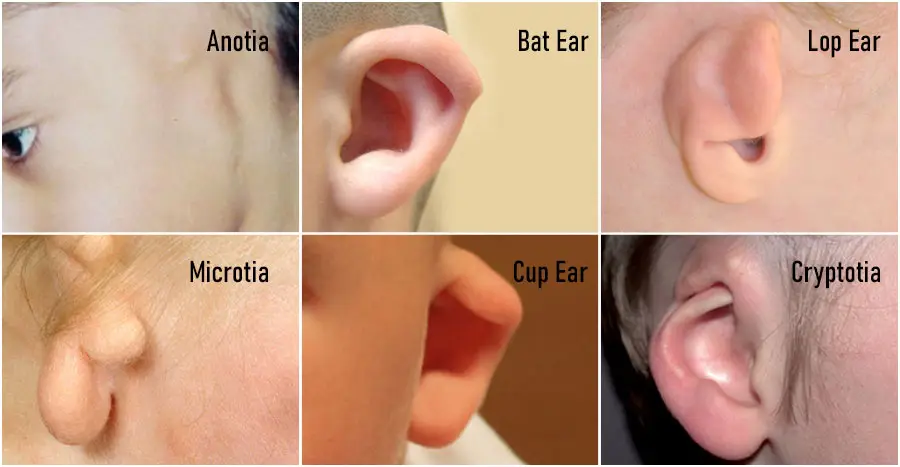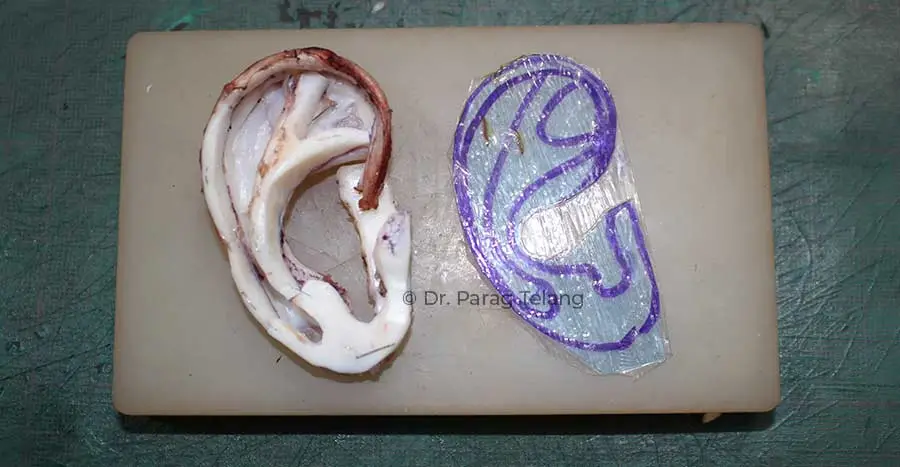Congenital ear deformities or ear malformations can be described as a disorder that affects the growth of the baby's ears while the baby is developing...
Ear Reconstruction Surgery
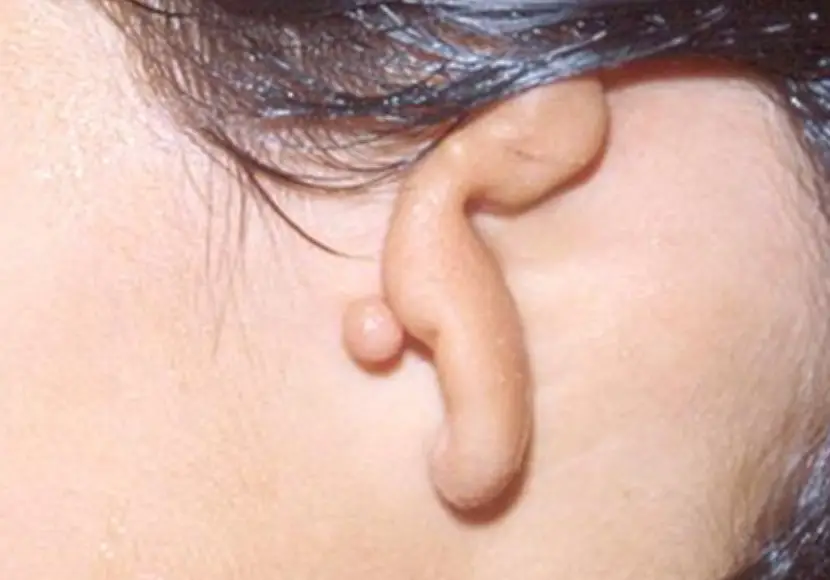
Ear Reconstruction Surgery in India, England, USA
Ear deformities or malformation can be either by birth or due to some injuries. In certain situations creating a normal looking ear can be done by using the tissue from the patient’s body like the skin, fascia or cartilage.
One of the most challenging plastic surgery procedures is of ear reconstruction. It is quite complicated because this is related to the very complex shape of the ear that has to be created to make it look natural but ear specialist Dr. Parag Telang is delivering excellent results due to the advancement in reconstructive surgery in India and his dynamism, dedication and determination. He is known for performing the best ear reshaping surgery in India (Mumbai), England, USA.
This surgery is advisable for two groups of patients: those having microtia (underdeveloped ear at birth) and those who have lost a normal ear on any kind of disease or accidents.
The procedure of ear reconstruction surgery is done in two stages, about 6-12 months apart.
Ear reconstruction surgery is done for various purposes, and the ultimate ear reconstruction surgery cost in India, USA, England will depend on the procedure followed and the specific condition for which the surgery was performed.
Ear reconstruction surgery: Stage 1
In the first stage a skin pocket is created at the site of the ear by reshaping the available tissue and the thinning the skin to impersonate the ear skin. Rib cartilage is then cropped in three pieces.
The rib cartilage is then sculpted and wired with fine stainless steel wire to construct a very detailed ear structure. This structure is then inserted in the pocket and a gentle suction is applied to it for enabling the skin and the designed ear structure to come together.
It may take approximately 4-6 hours for this surgery and the patient is expected to stay in the hospital for around 5-7 days.
Ear reconstruction surgery: Stage 2
In order to make it look like a normal ear sticking out of from the head it needs to be put into it’s proper position. To support the proper position of the ear it is lifted with a piece of cartilage. To complete the process a flap of tissue is added and a skin grafting is done over the exposed cartilage.
This stage may take around 3-4 hours and the patient is expected to stay in the hospital for 2-3 days.
90% of patients have graded ear reconstruction surgery results as good as excellent and it has a robust success rate too.
The ear reshaping surgery in India is performed under the local anaesthesia or the general anaesthesia depending on the underlying condition. Anaesthesia wears off a few hours after the surgery.
However, some patients having a thin or a low hairline, may not be more suitable for ear correction surgery but they can consult the surgeon or speak to a specialist.
FAQs About Ear Reconstruction Surgery
Happy patients and encouraging testimonials!
My nephew was born with ear deformity and no one could find a solution for that. Someone then suggested us Dr. Telang and we consulted him last month. I must say he is one of the best doctors!
*Opinions/Results may vary from person to person
"It has been 5 years since you last operated on me. I can't thank you enough. You changed my life and continue to change the lives of so many others like me. You have inspired me to help people with microtia and give back to the people that made my plastic surgery possible. Thank you again"
*Opinions/Results may vary from person to person
Microtia is an ear deformity that can range from mild structural problems to a completely missing ear.
